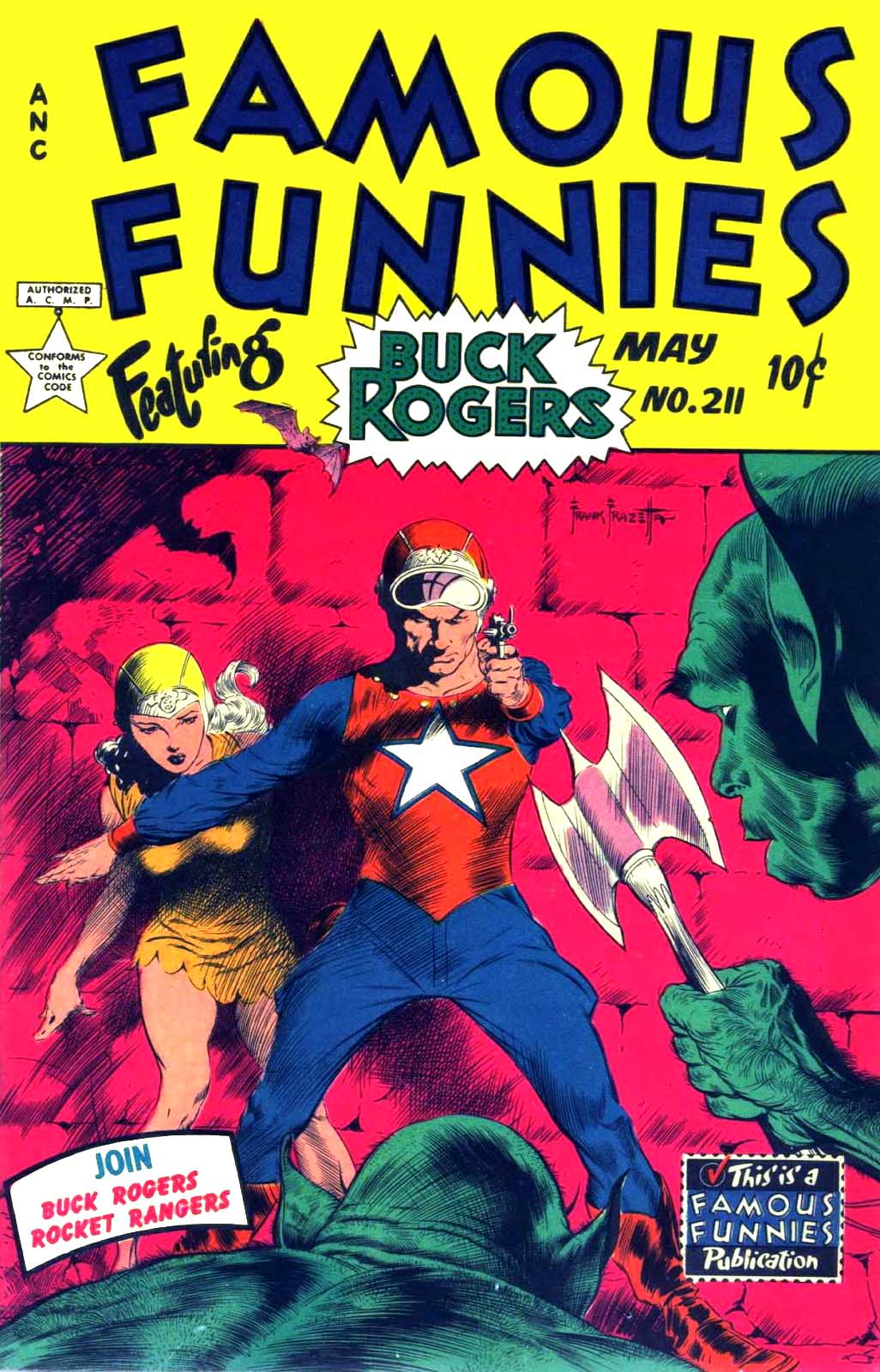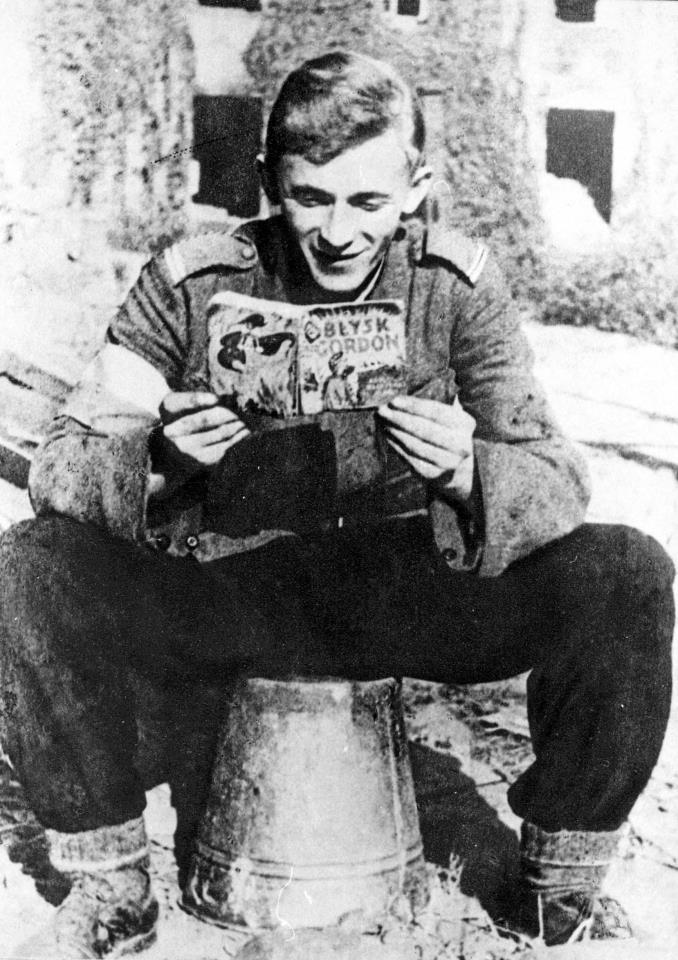|
Raygun
A raygun is a science-fiction directed-energy weapon that releases energy, usually with destructive effect.Jeff Prucher, '' Brave New Words: The Oxford Dictionary of Science Fiction,'' Oxford University Press, 2007, page 162 They have various alternate names: ray gun, death ray, beam gun, blaster, laser gun, laser pistol, phaser, zap gun, etc. In most stories, when activated, a raygun emits a ray, typically visible, usually lethal if it hits a human target, often destructive if it hits mechanical objects, with properties and other effects unspecified or varying. Real-world analogues are directed-energy weapons or electrolasers: electroshock weapons which send current along an electrically conductive laser-induced plasma channel. History A very early example of a raygun is the Heat-Ray featured in H. G. Wells' novel ''The War of the Worlds'' (1898).Van Riper, op. cit., p. 46. Science fiction during the 1920s described death rays. Early science fiction often described or ... [...More Info...] [...Related Items...] OR: [Wikipedia] [Google] [Baidu] |
Buck Rogers
Buck Rogers is a science fiction adventure hero and feature comic strip created by Philip Francis Nowlan first appearing in daily US newspapers on January 7, 1929, and subsequently appearing in Sunday newspapers, international newspapers, books and multiple media with adaptations including radio in 1932, a serial film, a television series, and other formats. The ''Buck Rogers'' strip, published 1929–1967 and syndicated by John F. Dille Co. (later called the National Newspaper Syndicate), was popular enough to inspire other newspaper syndicates to launch their own science fiction strips.Ron Goulart, "The 30s -- Boomtime for SF Heroes". ''Starlog'', January 1981 (pp. 31–35). The most famous of these imitators was ''Flash Gordon'' (King Features Syndicate, 1934–2003); others included '' Brick Bradford'' (Central Press Association, 1933–1987), '' Don Dixon and the Hidden Empire'' (Watkins Syndicate, 1935–1941), and '' Speed Spaulding'' (John F. Dille Co., 1940–1941). ... [...More Info...] [...Related Items...] OR: [Wikipedia] [Google] [Baidu] |
Phaser (fictional Weapon)
The ''Star Trek'' fictional universe contains a variety of weapons, ranging from missiles (the classic photon torpedo) to melee (primarily used by the Klingons, a race of aliens in the ''Star Trek'' universe). The ''Star Trek'' franchise consists primarily of several multi-season television shows and a dozen movies, as well as various video games and inspired merchandise. Many aspects of the fictional universe impact modern popular culture, especially the lingo and the idea of a spacecraft launching space torpedoes and firing lasers, and have had a wide influence in the late 20th to early 21st century. ''Star Trek'' is popular enough that its science fiction concepts have even been studied by real scientists, and NASA described its science in relation to the real world as "entertaining combination of real science, imaginary science gathered from lots of earlier stories, and stuff the writers make up week-by-week to give each new episode novelty." For example, NASA noted that the ... [...More Info...] [...Related Items...] OR: [Wikipedia] [Google] [Baidu] |
Death Ray
The death ray or death beam was a theoretical particle beam or electromagnetic weapon first theorized around the 1920s and 1930s. Around that time, notable inventors such as Guglielmo Marconi, Nikola Tesla, Harry Grindell Matthews, Edwin R. Scott, Erich Graichen and others claimed to have invented it independently. In 1957, the National Inventors Council was still issuing lists of needed military inventions that included a death ray. While based in fiction, research into energy-based weapons inspired by past speculation has contributed to real-life weapons in use by modern militaries sometimes called a sort of "death ray", such as the United States Navy and its Laser Weapon System (LaWS) deployed in mid-2014. Such armaments are technically known as directed-energy weapons. History In 1923, Edwin R. Scott, an inventor from San Francisco, claimed he was the first to develop a death ray that would destroy human life and bring down planes at a distance. He was born in Detroit, ... [...More Info...] [...Related Items...] OR: [Wikipedia] [Google] [Baidu] |
Flash Gordon
Flash Gordon is the protagonist of a space adventure comic strip created and originally drawn by Alex Raymond. First published January 7, 1934, the strip was inspired by, and created to compete with, the already established '' Buck Rogers'' adventure strip. Creation The ''Buck Rogers'' comic strip had been commercially very successful, spawning novelizations and children's toys, and King Features Syndicate decided to create its own science fiction comic strip to compete with it. At first, King Features tried to purchase the rights to the '' John Carter of Mars'' stories by Edgar Rice Burroughs. However, the syndicate was unable to reach an agreement with Burroughs. King Features then turned to Alex Raymond, one of their staff artists, to create the story. One source for Flash Gordon was the Philip Wylie novel '' When Worlds Collide'' (1933). The themes of an approaching planet threatening the Earth, and an athletic hero, his girlfriend, and a scientist traveling to the new ... [...More Info...] [...Related Items...] OR: [Wikipedia] [Google] [Baidu] |
Space Pilot X Ray Gun Made By Taiyo
Space is the boundless Three-dimensional space, three-dimensional extent in which Physical body, objects and events have relative position (geometry), position and direction (geometry), direction. In classical physics, physical space is often conceived in three linear dimensions, although modern physicists usually consider it, with time, to be part of a boundless four-dimensional Continuum (theory), continuum known as spacetime. The concept of space is considered to be of fundamental importance to an understanding of the physical universe. However, disagreement continues between philosophers over whether it is itself an entity, a relationship between entities, or part of a conceptual framework. Debates concerning the nature, essence and the mode of existence of space date back to antiquity; namely, to treatises like the ''Timaeus (dialogue), Timaeus'' of Plato, or Socrates in his reflections on what the Greeks called ''khôra'' (i.e. "space"), or in the ''Physics (Aristotle), P ... [...More Info...] [...Related Items...] OR: [Wikipedia] [Google] [Baidu] |
The Skylark Of Valeron
''Skylark of Valeron'' is a science fiction novel by the American writer E. E. Smith, the third in his Skylark series. Originally serialized in the magazine '' Astounding'' in 1934, it was first collected in book form in 1949 by Fantasy Press. Plot summary The story continued from the last scenes of battle in '' Skylark Three''. Having pursued and destroyed the fleeing Fenachrone colony spaceship, The Skylarkers decided to explore the galaxy seen up ahead, to take the opportunity offered by the great velocity resulted from the chase and the distance they had traveled. Along the way, Seaton discovered thought is a phenomenon of the "sixth order", and developed the technologies in relation with it. Meanwhile, DuQuesne's ruse faking death (see Skylark Three) fooled all the Fenachronians, the Skylarkers and the Norlaminians. He successfully deceived the Norlaminians into giving him everything the Norlaminians had given Seaton, eluded their watchful eyes, returned to Earth and quickl ... [...More Info...] [...Related Items...] OR: [Wikipedia] [Google] [Baidu] |
Greenwood Press
Greenwood Publishing Group, Inc. (GPG), also known as ABC-Clio/Greenwood (stylized ABC-CLIO/Greenwood), is an educational and academic publisher (middle school through university level) which is today part of ABC-Clio. Established in 1967 as Greenwood Press, Inc. and based in Westport, Connecticut, GPG publishes reference works under its Greenwood Press imprint, and scholarly, professional, and general interest books under its related imprint, Praeger Publishers (). Also part of GPG is Libraries Unlimited, which publishes professional works for librarians and teachers. History 1967–1999 The company was founded as Greenwood Press, Inc. in 1967 by Harold Mason, a librarian and antiquarian bookseller, and Harold Schwartz who had a background in trade publishing. Based in Greenwood, New York, the company initially focused on reprinting out-of-print works, particularly titles listed in the American Library Association's first edition of ''Books for College Libraries'' (1967), und ... [...More Info...] [...Related Items...] OR: [Wikipedia] [Google] [Baidu] |
The Original Series)
''The'' () is a grammatical article in English, denoting persons or things already mentioned, under discussion, implied or otherwise presumed familiar to listeners, readers, or speakers. It is the definite article in English. ''The'' is the most frequently used word in the English language; studies and analyses of texts have found it to account for seven percent of all printed English-language words. It is derived from gendered articles in Old English which combined in Middle English and now has a single form used with pronouns of any gender. The word can be used with both singular and plural nouns, and with a noun that starts with any letter. This is different from many other languages, which have different forms of the definite article for different genders or numbers. Pronunciation In most dialects, "the" is pronounced as (with the voiced dental fricative followed by a schwa) when followed by a consonant sound, and as (homophone of pronoun ''thee'') when followed by a ... [...More Info...] [...Related Items...] OR: [Wikipedia] [Google] [Baidu] |
Pilot Episode
A television pilot (also known as a pilot or a pilot episode and sometimes marketed as a tele-movie), in television in the United States, United States television, is a standalone episode of a television series that is used to sell a show to a television broadcasting, television network or other distributor. A pilot is created to be a testing ground to gauge whether a series will be successful. It is, therefore, a test episode for the intended television series, an early step in the series development, much like pilot studies serve as precursors to the start of larger activity. A successful pilot may be used as the series premiere, the first aired episode of a new show, but sometimes a series' pilot may be aired as a later episode or never aired at all. Some series are commissioned straight-to-series without a pilot. On some occasions, pilots that were not ordered to series may also be broadcast as a standalone television film or special. A "#Backdoor pilot, backdoor pilot" is an ... [...More Info...] [...Related Items...] OR: [Wikipedia] [Google] [Baidu] |
The Original Series
''Star Trek'' is an American science fiction television series created by Gene Roddenberry that follows the adventures of the starship and its crew. It later acquired the retronym of ''Star Trek: The Original Series'' (''TOS'') to distinguish the show within the media franchise that it began. The show is set in the Milky Way galaxy, circa 2266–2269. The ship and crew are led by Captain James T. Kirk (William Shatner), First Officer and Science Officer Spock (Leonard Nimoy), and Chief Medical Officer Leonard H. "Bones" McCoy ( DeForest Kelley). Shatner's voice-over introduction during each episode's opening credits stated the starship's purpose: Space: the final frontier. These are the voyages of the starship ''Enterprise''. Its five-year mission: to explore strange new worlds, to seek out new life and new civilizations, to boldly go where no man has gone before. Norway Productions and Desilu Productions produced the series from September 1966 to December 1967. Par ... [...More Info...] [...Related Items...] OR: [Wikipedia] [Google] [Baidu] |
Lost In Space
''Lost in Space'' is an American science fiction television series, created and produced by Irwin Allen, which originally aired between 1965 and 1968 on CBS. The series was inspired by the 1812 novel ''The Swiss Family Robinson.'' The series follows the adventures of the Robinsons, a pioneering family of space colonists who struggle to survive in the depths of space. The show ran for 83 episodes over three seasons. The first season comprised 29 episodes that ran 1 hour apiece, filmed in black and white. In seasons 2 and 3 the episodes were 55 minutes long and shot in color. Series synopsis Overview On October 16, 1997, the United States is gearing up to colonize space. The ''Jupiter 2'', a futuristic saucer-shaped spacecraft, stands on its launch pad undergoing final preparations. Its mission is to take a single family on a five-and-a-half year journey to an Earth-like planet orbiting the star Alpha Centauri. The Robinson family consists of Professor John Robinson ( Guy Wil ... [...More Info...] [...Related Items...] OR: [Wikipedia] [Google] [Baidu] |
Laser
A laser is a device that emits light through a process of optical amplification based on the stimulated emission of electromagnetic radiation. The word "laser" is an acronym for "light amplification by stimulated emission of radiation". The first laser was built in 1960 by Theodore H. Maiman at Hughes Research Laboratories, based on theoretical work by Charles Hard Townes and Arthur Leonard Schawlow. A laser differs from other sources of light in that it emits light which is ''coherent''. Spatial coherence allows a laser to be focused to a tight spot, enabling applications such as laser cutting and lithography. Spatial coherence also allows a laser beam to stay narrow over great distances (collimation), enabling applications such as laser pointers and lidar (light detection and ranging). Lasers can also have high temporal coherence, which allows them to emit light with a very narrow spectrum. Alternatively, temporal coherence can be used to produce ultrashort pulses ... [...More Info...] [...Related Items...] OR: [Wikipedia] [Google] [Baidu] |




.png)